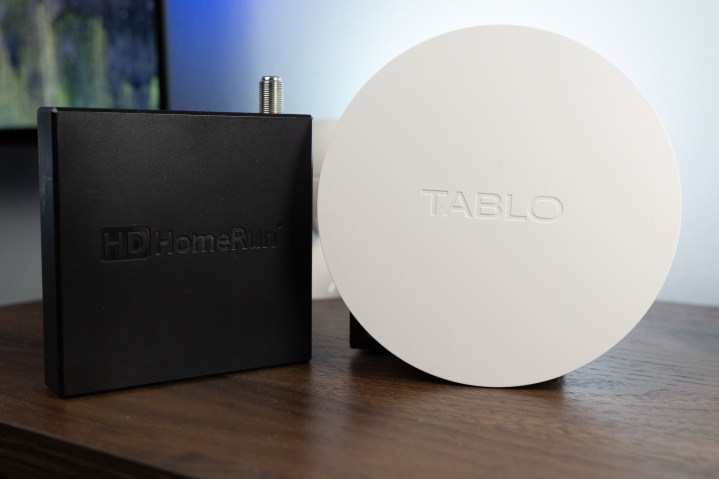
On today’s You Asked: From mini to micro to nano — what’s next, and what’s with those words? Also, how do you know if a TV has a great tuner? Are more audio reviews coming?
The trouble with tuners

Jim from “the middle of OTA nowhere” (Asheville, NC), writes: First, does anyone test the tuners in TVs for the ability to pull distant stations and stability? Are there any set-top boxes that are known for having very good tuners?
Second, the 2024 TCL 75-inch QM8 is going for $1,300 right now — the same as the new QM6K. Which would be a better buy for sports? I have no use for the soundbar they are throwing on the pre-orders.
First off, Asheville is beautiful! Who needs OTA TV when nature’s TV is right out your front door? I’m kidding, of course.
Does anyone test the tuners in TVs for the ability to pull distant stations and keep them stable? Not as far as I’m aware. Consumer Reports used to periodically include reports on tuner testing, but I don’t know if they still do. (Suggestion: Ping Jim Wilcox there, tell him that Caleb sent you, and ask him to advocate for you.)
TV tuner testing is challenging because it’s very specific, and the tester needs to be in just the perfect spot: a place where a signal is accessible but hard to get. Then TVs need to be ranked based on how well they pull in that signal. Without breaking into the TV tuner’s specs and knowing the input sensitivity rating, I’m not sure how you could determine on paper which TV might have a superior tuner for your particular case.

The better bet? Having a great TV antenna in the right place, with the ability to aim it, is way more effective than relying on a tuner to pull in a station. A tuner can be more sensitive and it could be good at locking on that signal. However, if the signal itself is dodgy it’s not like an amplifier or tuner can make it better.
Given this is a priority for you, I imagine you likely already have the best possible antenna or aerial. I can’t help determine the best tuners because I am in a place where getting local stations is fairly easy. Harder-to-get stations are often a result of geography getting in the way.
Dedicated tuner boxes may not be better than every built-in tuner, but they have one job – so hopefully they’re built to be as good as possible. I have not tested them myself but I hear the Silicondust HDHomeRun tuners are good as are those made by TBS — the 5520SE specifically.
As for 2024 QM8 vs. QM6K? I haven’t tested the QM6K yet (it’s coming). However, I’d put money on the QM8 being better. If you can’t wait, buy the QM8 while you still can — with TCL’s current Super Bowl sale, it’s probably as inexpensive right now as it ever will be.
Wanted: more audio reviews

Chris in Vancouver, BC writes: Your channel in recent years has changed focus from AVR equipment in general to TVs and select high-end soundbars — almost exclusively it seems. The reviews for things like earbuds and headphones seemed to dwindle in 2024. More relevant to my question, reviews on home theatre audio equipment have been non-existent. Your videos do reference AVRs, and your set always shows off a revolving set of speakers (and always makes me want to learn more about them). Clearly the channel sees the importance and popularity of these items for a full theatre experience. Is there any chance we could start to see more reviews of audio equipment, consumer grade speakers, AVRs, amps, and preamps in the future?
It’s true that over time we have become more and more focused on TVs. The reason is rather involved, but simply put: We get way, way more views on TV content than audio content. Similarly, we get far more views on soundbars and accessible surround systems like the Bravia Theater Quad than we do on more conventional speakers, receivers, amps, digital-to-analog converters (DACs), etc.
Lest you think we are just in it for the money … no, that isn’t the case. We do have to run a profitable business and I have managed to carve out a niche in TVs and video in general, so, as you can imagine, that’s become a core part of my business on YouTube.

However, nobody would like more of the “A” in our A/V coverage than me. I am a musician and a low-key audiophile. I love everything about at-home music listening. Given a budget, I will spend more on my audio system than my TV if forced to choose between the two.
Right now, I can make about three videos a week on average. You Asked is one of them. That leaves two videos. One is usually a TV review. Another may be a TV unboxing, or as you pointed out, audio gear that a lot of folks want to learn about or buy.
Could I do more high-end audio stuff? Yes, but folks need to show up and watch it. I’ve learned from experience on YouTube that you need to be consistent with topic coverage. So I would need to do it consistently and often enough to build up an audience. (I’d love to do it, but I think we’d need to make some operational tweaks to make it work. I’ll see what I can do.)
Mini, micro, nano … what’s next?

Yeni writes: I heard some people call QDEL “nanoLED.” So does that mean this is the real nanoLED? What should come after microLED TVs — a superior version of the already extremely superior microLEDs? Are we progressing that fast? I haven’t even got a microLED TV yet. I want to hear your explanation since nobody on the internet does it like you.
First, the pace of technology waits for no-one. Just kidding, you aren’t getting left behind.
Here’s the thing: There’s a disconnect between microLED and nanoLED. In the case of nanoLED, the “nano” is actually referencing a measurement of size, whereas the “micro” in microLED is a loose reference to the size: about 50 to 100 micrometers.
When regular LEDs became smaller, the industry used the word “mini” to indicate a reduction in size. However, when LEDs became even smaller, they were labelled as “micro” because micro sounds smaller than mini. I’m not sure it had much to do with micro — micrometer — as a measurement.
With nano, quantum dots are technically nanoparticles: particles that measure at the nanoscale. Nano is 10 to the negative ninth power (10−9) and are much, much smaller than microLEDs. The difference between a microLED and a single quantum dot is like comparing the size of a soccer ball to a blade of grass on the pitch. One is fairly visible with the naked eye, but seeing the other requires a microscope.
To get smaller than a nanoparticle, we would have to go to the pico scale, which is 10 to the negative twelfth power (10−12). I just have a hard time seeing how this is a benefit to a display.
I would worry less about how big the light is and pay more attention to how it is used to your benefit.
Keep those questions coming. If you have a question you want answered, please send it to You Asked at Digital Trends dot com and we’ll see if your question gets picked to be answered on the show.


